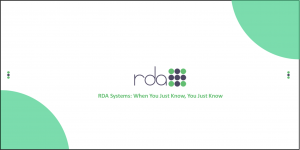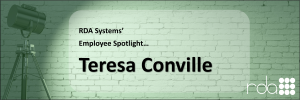In an age where cyber threats are becoming more frequent and sophisticated, safeguarding sensitive data is more critical than ever for public institutions. Whether you’re managing a school district or working within local government, the stakes are high when it comes to protecting the personal information of your constituents. From student records to financial data, these organizations are increasingly targeted, making data security not just an IT issue, but a top organizational priority.
In this article, we’ll walk through some practical steps you can take to properly manage and secure sensitive data, helping you protect your community and maintain trust.
Understanding the Types of Sensitive Data
Before diving into how to secure data, it’s essential to understand what qualifies as sensitive data for public institutions.
- Personally Identifiable Information (PII): This includes names, Social Security numbers, birthdates, and other information that can be traced back to an individual. Schools manage student records, while local governments handle voter registration and employee records.
- Financial Records: Public institutions manage tuition payments, tax records, and grant funding. Financial data is a prime target for cybercriminals, making its protection essential.
- Health Information: Schools maintain student health records, while governments handle public health data. Both require special care to avoid privacy violations.
Understanding these types of sensitive data is the first step to securing them. Identifying what data you have and where it’s stored helps you classify information and focus security efforts where they’re needed most.
Assessing Your Current Data Security Posture
Once you’ve outlined the types of data you’re handling, it’s time to assess how well it’s being protected. Think of this as a health check for your data security.
- Perform a Risk Assessment
Start with a risk assessment. The Center for Internet Security (CIS) recommends evaluating both internal and external threats to your data. This includes everything from phishing attacks to insider threats. Knowing where your vulnerabilities are is key to addressing them. Keep in mind that this should be an ongoing process—threats evolve, and so should your defenses. - Use the NIST Cybersecurity Framework
The NIST Framework breaks down cybersecurity into five key steps: Identify, Protect, Detect, Respond, and Recover. For example, in the “Identify” phase, create an inventory of all sensitive data and who has access to it. From there, you can develop stronger protective measures, such as encryption and access controls. - Classify Your Data
Not all data requires the same level of protection. According to the International Association of Privacy Professionals (IAPP), classifying data based on its sensitivity allows you to focus resources on high-risk information like financial and health records. - Check for Compliance Gaps
Ensure your organization complies with data privacy laws, like FERPA for schools or CCPA for local governments. Non-compliance can lead to hefty fines and a loss of trust. Regularly review your policies to make sure they meet legal requirements.
Implementing Best Practices for Data Protection
After your assessment, it’s time to take action by implementing best practices that can greatly enhance your data security.
- Encrypt Your Data
Encryption scrambles your data so that even if it’s accessed by unauthorized users, it’s unreadable without the correct decryption key. Tools like full-disk encryption and secure socket layer (SSL) encryption make it easier to protect data both at rest and in transit. - Tighten Access Controls
Unauthorized access isn’t always from outside—sometimes it comes from within. Role-based access control (RBAC) limits who can see certain data based on their job. For example, teachers don’t need access to financial records. IAPP also recommends using multi-factor authentication (MFA) to add another layer of security, requiring more than just a password to access data. - Regular Security Audits and Monitoring
Ongoing monitoring helps spot unusual activity before it turns into a bigger issue. Automated tools can flag suspicious logins or data transfers, allowing you to act quickly. Regular security audits, as recommended by CIS, help you catch weaknesses early and ensure that your defenses are working as intended.
Training and Awareness for Staff and Users
Even with the best tools in place, human error can still be a major risk. Phishing emails, weak passwords, and accidental data exposure are common threats that can be reduced through proper training.
- Cybersecurity Training for Staff
Train employees on recognizing phishing emails, creating strong passwords, and using secure networks. According to Microsoft’s Security Best Practices, regular training tailored to your organization’s needs is one of the most effective ways to prevent data breaches. - Regular Simulated Attacks
Simulated phishing attacks help reinforce what staff have learned. These tests mimic real-life scenarios and can reveal where additional training is needed. The goal is to make sure staff are prepared in the event of a real attack. - Education for Students and Constituents
For schools, teaching students about basic cybersecurity principles—like keeping login credentials private—can help prevent unintentional data breaches. Local governments can run public awareness campaigns to educate constituents on how their data is protected and what they can do to help, like using strong passwords or avoiding phishing scams.
Preparing for the Worst: Incident Response Plans
Even with solid defenses, incidents can still happen. That’s why having an incident response plan is crucial.
- Develop a Clear, Step-by-Step Plan
An incident response plan outlines the steps to take in case of a breach. According to NIST, this includes phases like detection, containment, eradication, recovery, and post-incident review. Containing the breach quickly and recovering efficiently helps minimize damage. - Establish Roles and Responsibilities
A strong plan clearly defines who is responsible for what. When a breach happens, everyone should know their role—whether it’s IT isolating the affected systems or administrators communicating with the public. Designating an incident response team that includes members from IT, legal, and upper management ensures a swift and coordinated response. - Practice, Practice, Practice
Just like fire drills, practice makes perfect. Running through your incident response plan regularly with simulations or tabletop exercises ensures that everyone knows their role and that the plan works effectively.
Conclusion
Managing and securing sensitive data is an ongoing effort that requires a multi-layered approach. By understanding the types of data you’re responsible for, assessing your current security posture, implementing best practices, training staff, and preparing for incidents, you can build a strong defense that protects both your organization and the people you serve.
If you’re ready to enhance your organization’s data security with proven, affordable solutions, contact us at RDA Systems today. Discover how our expertise in ERP systems for K-12 school districts and local governments can help you protect sensitive data while achieving your operational goals.





